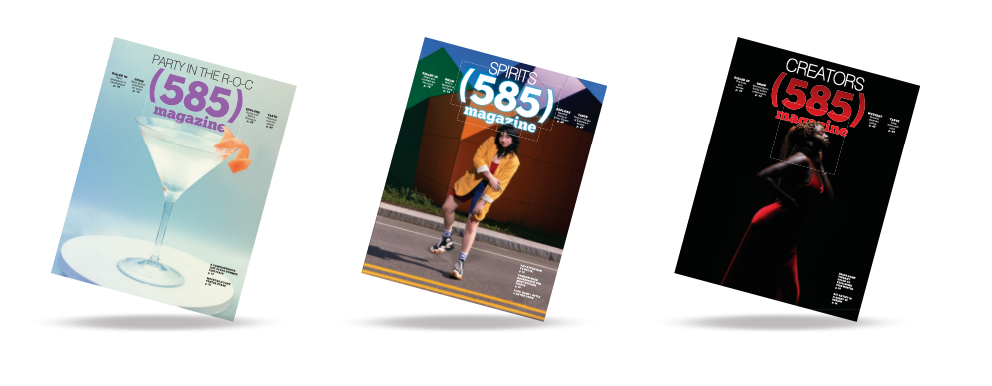
Kevin Kurtz
Born in Fort Hood, Texas and raised in upstate New York, this author, educator, and science junky has worked as a science educator in South Carolina, in Oregon, and while floating on a research ship over the Pacific Ocean. These experiences helped him write his non-fiction picture books with Arbordale Publishing (A Day in the Salt Marsh illustrated by Consie Powell, A Day on the Mountain illustrated by Erin E. Hunter, and A Day in the Deep illustrated by Erin E. Hunter) and his free interactive ebook (Uncovering Earth’s Secrets illustrated by Alice Feagan). Welcome, Kevin Kurtz!
Q. Thank you, Kevin, for being here! To start, what three things would you like readers to know about your writing process?
Thanks for having me!
Well, one of the reasons I write nonfiction is because I love learning new things. I often get inspiration when I find out something I didn’t know before and I think, “Wow! That’s pretty cool. This could be a good topic for a children’s book.” Luckily for me, my sense of wonder seems to be pretty closely in sync with that of a seven-year old, so I can usually trust that if I think it is cool that vampire squid use glowing mucus to protect themselves, kids will probably think it is cool too.
Once I decide on a topic, research is hugely important. I do research not only to make sure I know what I’m talking about, but also to find the cool and/or weird fun facts that kids will be into and that, hopefully, no other children’s author has written about before. It may take months to find and go through the articles, books, websites, and documentaries on the topic that have accurate, useful information; not to mention go to the places I’m writing about (if I can). Taking that much time for research has a benefit; it gives me more time to think about the best approach to make the book appealing and understandable to elementary age kids.
One final thing about my process is that the writing is actually the hardest part for me. When I sit down to write, my impulse is that everything has to be great immediately. If I let that impulse stay in control, then I will sit there just thinking and thinking and thinking and nothing ends up on the page, because nothing I come up with meets my impossibly high standards. Since that is never going to result in a completed book, I now know I must ignore the very powerful perfectionist thoughts in my brain. I write down the sentences as they come, even if they’re terrible. I call this “spewing” (though the only person who hears me call it that is myself), and do it because it is better to have something on the page that I can work with than it is to have all the words and ideas locked inside my head for all of eternity. It also reminds me that no one is going to read the manuscript until I revise it like thirty times, so who cares if the first draft stinks.
Q. What advice do you have for kids and teens who want to write non-fiction professionally? What about for their parents?
For kids and teens, my advice would be to read as often they can. Reading will help them grow their vocabulary. They will also read so many well-written sentences that they will start internalizing how to write them on their own. Reading will also help them broaden their knowledge. I think part of what makes someone a good nonfiction writer is the ability to make connections between what their readers know and don’t know. Having a broad knowledge base makes it easier to make those connections.
They should also read fiction, watch movies, listen to comedians, and do other things that involve storytelling. The best nonfiction writers share information in story form, so it is important for future nonfiction writers to develop good story sense.
And write as much as possible, as writing is like sports in that the more you practice it, the better you get at it.
For parents, my advice is to give your kids a variety of real life experiences. The best nonfiction often draws on some firsthand experience, so take your kids hiking, take them to the beach, take them to museums and historical sites, help them build something, put a bird feeder in your backyard and watch the birds with them, buy them a telescope and go out at night and look for Mars, take them to book festivals so they can talk to authors, buy them a handheld digital microscope and explore the microscopic world with them, or anything else that may broaden their horizons. Also, engage them in conversation. There is a journalistic side to all nonfiction, so learning how to talk and listen to people is important.
Perhaps the most important thing that parents can do is to read their child’s writing and react to it by being 90% cheerleader and 10% critic. With the possible exceptions of Mozart and Jodie Foster, every great writer, artist, musician, athlete, actor, etc. was terrible at it as a kid, at least by adult standards. If your kid is writing, just the fact that they are attempting something that requires a great degree of self-discipline and mental focus deserves applause. But the biggest reason they need lots of encouragement is because the only way they are going to become good writers is by continuing to practice writing and encouragement will help keep them motivated. That said, writers usually write for other people, and part of how we improve as writers is by learning how other people react to our writing. To keep your kids writing but also help them to improve, focus on one aspect of their work until they get better at it, and then congratulate them for their improvement. Then start focusing on a different aspect. I think that would help improve a kid’s writing without crushing egos and potentially nipping creative potential in the bud.
Q. Tell us about how the interactive ebook, Uncovering Earth’s Secrets, came to be. And while we’re on it, how did you score the amazing gig of Educational Officer on the JOIDES Resolution?
Uncovering Earth’s Secrets is a picture book I wrote to introduce kids to the research of the R/V JOIDES Resolution. It is available to download for free as an eBook, including a free interactive version for iPads, at http://joidesresolution.org/node/2998. I wrote the book because I was lucky enough to be able to go out to sea on the JOIDES Resolution more than once. The first time, I was working as the education director at a children’s science museum in Oregon and I was one of eleven educators chosen from across the U.S. to participate in the 2009 School of Rock, an intensive educator workshop that took place on the JOIDES Resolution for ten days at sea. We learned from scientists on the ship and were able to study samples from the sea floor using the ship’s lab equipment. It was an amazing experience and immediately got me thinking I should write a children’s book about this ship and its research.
When an opportunity to be the Education Officer on an expedition came up at a time when I could take advantage of it, I applied for the position and was chosen for the job. My expedition took place from December 2010 to February 2011 in the Pacific Ocean near New Zealand. We were drilling a chain of extinct underwater volcanoes to learn more about what happens inside the Earth when hot spot volcanoes are forming. My job was to communicate online what we were seeing and doing during the expedition to school groups and the general public.
A year later, the JOIDES Resolution’s outreach program received a grant from the National Science Foundation to expand their outreach efforts and develop new education materials. They put out a call for project proposals that could meet the goals of the grant. I sent them a proposal to write a children’s picture book about the JOIDES Resolution that would be available for free as an eBook. My proposal was funded and I was able to create Uncovering Earth’s Secrets with illustrator Alice Feagan. It was released in 2013 and then expanded into an interactive iPad version in 2014.
Anyone interested in learning more about the JOIDES Resolution and/or its opportunities for educators can check out its website at http://joidesresolution.org.
Q. As a picture book author, do you ever wish you were also an illustrator so you could provide both the text and images for your work? Or do you enjoy collaborating with artists?
I do wish I were an illustrator. When I am writing, I am always thinking visually and imagine what illustrations could work with my words to tell the story or explain the concept. I don’t have the design sense or the level of drawing talent, though, where I could take a visual idea and depict it on a page in a way that is aesthetically pleasing and able to tell a story, at least not at the level that someone I’m not related to would pay money to look at it. Because I recognize that about myself, I am happy to work with illustrators who can do that.
One of the surprising things about publishing is that for many pictures books with a writer/author team, it is not a close collaborative effort. I have actually never seen or even spoken to my illustrators for my “A Day in a Habitat” series. My understanding is that publishers request that writers and illustrators don’t talk to each other so that the illustrator is given the space they need to give their imagination free reign, without being hampered by the dictates of the writer. I also think it is done this way so the writer and illustrator don’t start arguing with each other and then the book is never finished. I was very nervous waiting to see how the illustrations for my first book A Day in the Salt Marsh were going to turn out, but when I saw Consie Powell’s final illustrations, they were so brilliant and beautiful that I have trusted this process ever since.
Q. The rhyme in your picture books is done very well. What tips do you have for authors wishing to perfect their rhyme and meter?
Thanks! I’m still learning how to perfect my rhyming and meter, but I have a few tips I can give. I work out the general structure of the book in advance, but when it’s time to work on rhyme and meter, I focus on just one stanza at a time. First, obviously, I decide what I want to say in that stanza. Then I start brainstorming some different words and phrases I can use that would explain or describe what I want to say. I look at that list of words and pick out the words that are likely to have lots of rhymes to choose from. Anything with one syllable is usually the best candidate. Then I look through all the possible rhymes for that word to see if there are any pairs that will work together to describe what I want to say. I usually do this with a rhyming dictionary, which allows me to quickly see all the options. If I find something, I write it down in stanza form so I can read it and see if it works as a rhyme.
If the rhyme works, then I have to work on making sure the meter is consistent. I read out loud what I have written so far and exaggerate the beats to make sure the meter is at the forefront of my mind. Then I read the new rhyme thinking only about whether it is consistent with my meter. If the meter doesn’t quite match, I’ll think of other words I can use to replace the stumbling spots. A thesaurus is a big help in finding synonyms that have different syllable counts and stresses.
Unfortunately, I have found it is easy to trick myself into thinking I have a consistent meter, because I read the words with the rhythm I want rather than the rhythm they naturally have. To make sure I am not doing this, before I send a manuscript out, I will not read it for a few weeks, and then when I come back to it, I am more likely to hear it with fresh ears. One of the biggest helps, though, is having a friend with an ear for meter who is willing to read your manuscript and point out where you still have problems.
The most important thing to do, though, when writing in verse is to revise, revise, revise. The meter and rhymes basically have to be perfect in a picture book manuscript, or publishers usually won’t touch it. Picture book critics make a big deal about inconsistent meter, though I’m not 100% sure any first grader cares about the meter, as long as it’s not really off. Another thing you have to keep is that you don’t get to break all the rules of grammar and syntax like all the major poets did and still do. Everything has to be written in sentences that are clear and grammatically perfect. So it’s a lot of work revising the manuscript over and over again until I get it right, but I like writing in rhyming verse, and the feedback I receive from teachers and kids is they enjoy reading it.
Q. Do you have plans to write any longer science-themed books for older kids or teens? How about fiction for any age? Why or why not?
I do sometimes think about writing science books for older kids and teens, particularly since one of the things I have to keep in check whenever I am writing is my urge to write about every single thing I know. I could indulge that urge a bit more when writing for older kids than I can when writing picture books for four to eight year olds. One book that I would like to write for older kids or teens would introduce plate tectonics by focusing on volcanoes, tsunamis and earthquakes.
I’ve also recently started having some ideas for fiction pictures books and have just about completed one manuscript. I’m planning to send it out soon to see if it will be published. I enjoyed that working on it gave me more opportunities to let my imagination and sense of humor run wild, so I plan to work on some others in the future. I love writing nonfiction, though, so I will continue writing a lot more of those, too.
Q. What are you working on next?
I just finished up another interactive eBook with illustrator Alice Feagan that is basically a sequel to Uncovering Earth’s Secrets. It is also about the research of the JOIDES Resolution, but this one focuses on what microbiologists on the ship have been discovering living under the seafloor. The book is titled Where the Wild Microbes Grow: The Search for Life Under the Seafloor. I was excited to be able to write this book, because the more I have learned about the natural world, the more I have realized that the most important living things on the planet are microbes. None of us could survive without them. Unfortunately, they have a PR problem because most people think all microbes are germs. I was glad to be able to write a book that could help introduce kids to microbes and the amazing and important things that they can do.
Where the Wild Microbes Grow just came out in September and is available as a free PDF eBook and interactive iPad iBook at http://joidesresolution.org/node/2998. It can be read as a traditional children’s story, but on each screen, readers can tap different places in the illustrations that reveal photos, videos and text that help them learn more about seafloor microbes and the scientists who study them.
I am also working on finishing up my first attempt at a fiction picture book that I mentioned, as well as fiction/nonfiction hybrid that introduces kids to scientists and how they use the process of science to help us understand the world where we live.
Q. Do you think interactive eBooks for kids will grow in popularity?
I think they have huge potential as teaching tools. I love that my two JOIDES Resolution interactive eBooks have the resources built into them to help kids follow their curiosity and learn more about the topic. My ideal reader for these books would read it straight though the first time and experience it as a traditional children’s picture book, but then the second time they read it, they would look for all the photo, video and text pop-ups on each page that can help answer their questions where all these supplemental resources are curated to make sure they are accurate and age appropriate.
I also love that interactive eBooks can easily be used by teachers, who can project the eBook on a screen or interactive whiteboard so the entire classroom can easily read it together. Since an increasing number of classes now have iPads for each of their students, kids can also explore the books individually in the classroom.
I also think there is a lot of potential for interactive eBooks to help early readers learn to read. Early readers can tap a word in an interactive eBook and hear a recording that tells them how to say the word and what it means. Tapping could also bring up a video that breaks the word down into its sounds to help the reader figure out how to pronounce the word, kind of like those old Sesame Street clips. Interactive eBooks for early readers could also use voice recognition to reward kids each time the iBook registers that the kid read all the sentences on a page. It could do this by showing a cool animation or some other kind of interactive experience that rewards them for reading and motivates them to keep trying.
I don’t foresee interactive eBooks becoming popular with fiction books written for experienced readers, though. Most of the ones I have seen seem to use the interactive elements in ways that distract from, rather than enhance, the story. They are gimmicky and can come across kind of like animated movies or video games, except really lame ones. I think fiction works best when readers can give themselves to the story and become completely engrossed in the world the words help them imagine. Having said that, I bet there are ways that haven’t been imagined yet, or at least that I haven’t heard of yet, to use written words and the interactivity of tablets to tell compelling stories, but I think it will ultimately produce a different experience from reading a novel, and there will always be people who want the traditional reading experience.
Q. You do a lot of school visits in person and via Skype. What is the most rewarding part of speaking with young readers?
I find both live and Skype school visits to be very rewarding. I really enjoy the give and take of talking to kids face-to-face. I also like that school visits give me the opportunity to see what kids think about my books and what aspects they respond to most.
The most rewarding part, though, is I get the sense that my school visits are inspiring kids to be more interested in reading, writing, science, and nature. It makes me feel good to think that I may be broadening their horizons, both to the diversity of our planet and to the possibilities for their own lives.
Visit Kevin online (http://www.kevkurtz.com), on Twitter (@kevkurtz5000) and at the Rochester Children’s Book Festival (www.rochesterchildrensbookfestival.com) on November 7th at Monroe Community College.
Deena Viviani is a Rochester-based Young Adult Services Librarian. Read her book reviews at www.deenaml.livejournal.com or send her a note at
De**********@ho*****.com
– she loves to hear from readers!
Views: 1




